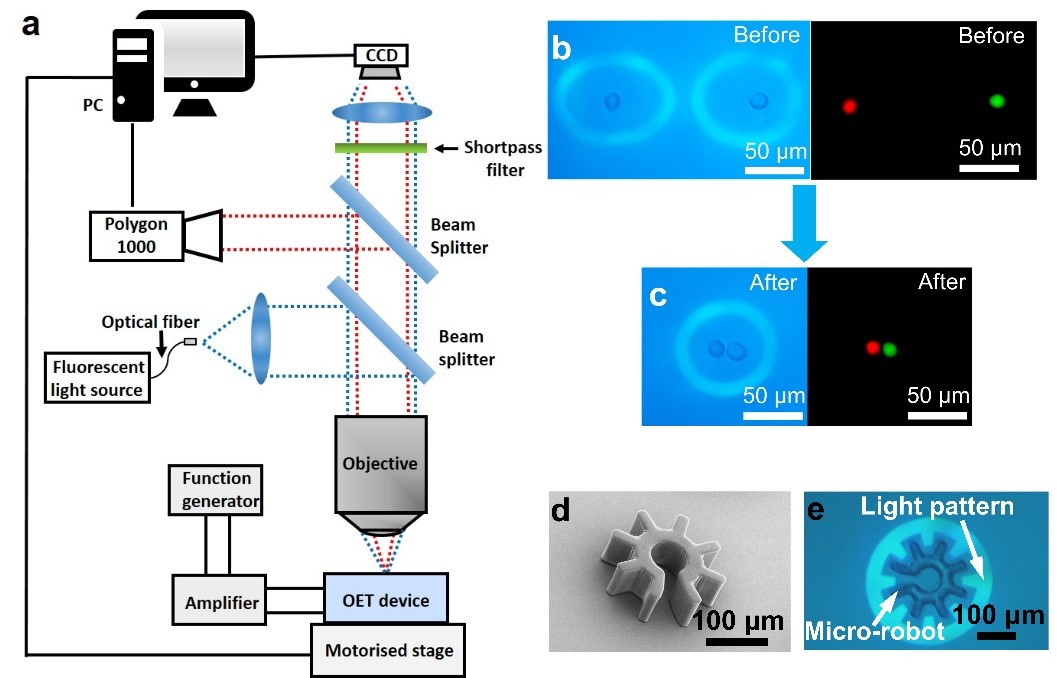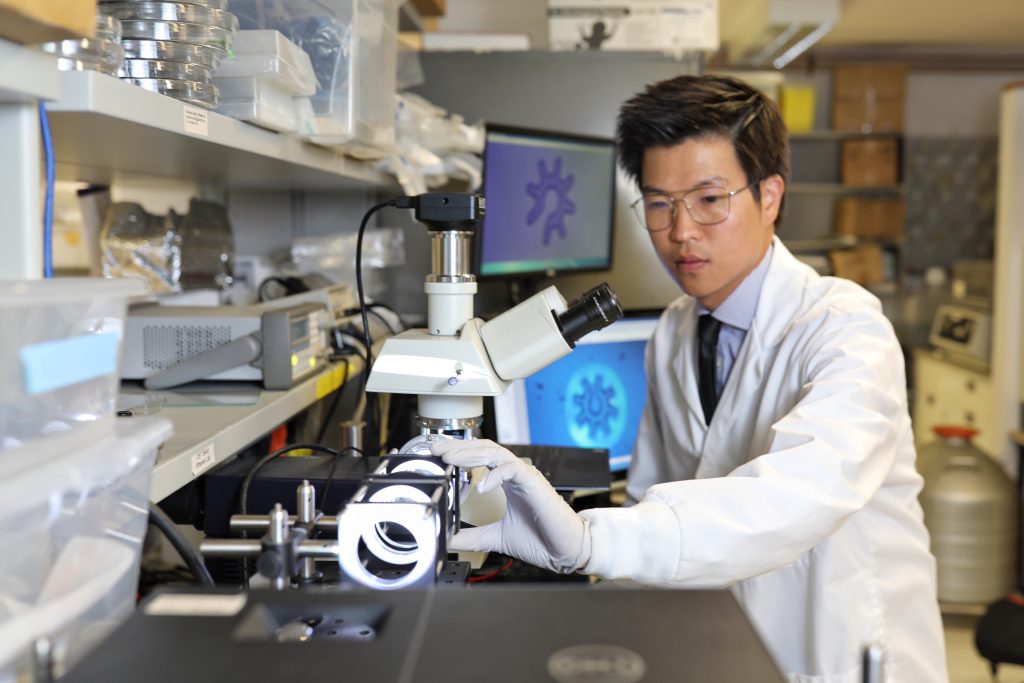Optoelectronic tweezers based on patterned illumination for cell and micro-robotic manipulation
Shuailong Zhang
Department of Chemistry, University of Toronto
Optoelectronic tweezers (OET) is a useful optofluidic micromanipulation technology that relies on light-induced dielectrophoresis (DEP) for touch-free, noninvasive actuation of micro-scale objects in physical, chemical and biomedical studies. To date, there have been demonstrations of OET manipulation of many nano- and micro-scale objects, ranging from semiconductor nanowires, nanoplatelets, nanotubes, nanoparticles, to cells, microorganisms and microparticles on the order of several microns to tens of microns. More recently, OET was demonstrated to be capable of manipulating large photonic/electronic components with sizes greater than 150 microns. This suggests a unique role for OET as an optical micromanipulation/microassembly tool for objects with larger sizes than can be manipulated using many other optical micromanipulation techniques.
One challenge for OET technology is the lack of suitable light source capable of coupling with microscope to provide fast and easy-programmable illumination patterns. This limits the application of OET for efficient and precise micromanipulation applications. The conventional solution is to use a digital micromirror device (DMD) projector. However, due to the function of DMD projector, the build-in optics are mainly designed for amplification applications, which makes it difficult for the light pattern to be coupled with a microscope and normally comes with a cost of high transmission loss (over 70%). In our recent work, we used the Polygon1000 from Mightex, which can be easily adapted to a standard upright microscope. The Polygon1000 is capable of providing fast, wavelength-tunable and easy-programmable illumination patterns via a user-friendly interface, which allows us to perform some important biomedical experiments. Figure 1a shows the schematic experimental setup used for OET experiments in which Polygon 1000 is the light pattern illuminator. Figure 1b,c show the results of using light patterns to move to one APRE-19 cell (pre-labelled with red fluorescent dye) and one MCF-7 cell together (pre-labelled with green fluorescent dye). Apart from moving cells, micro-objects with sizes over 100 μm can also be controlled in OET system. Figure 1d shows the scanning electron microscope image (SEM) of a cogwheel-shaped micro-robot with a diameter of 200 μm. Figure 1e shows the bright-field image of the micro-robot in operation in the OET system, in which a light pattern is used to control the micro-robot’s movement.
These results demonstrate the capability of OET technology for micromanipulation applications. It can be used to control cells at a single cell level and micro-actuator with a size of 200 μm. We plan to use OET technology for more biomedical studies in future, such as studying cell-cell interactions, cell-cell competition and cell gene expression. We propose OET will find use in a wide range of applications requiring precise and efficient micromanipulation in the future.

Figure 1a) Schematic of the experimental setup. b) Bright-field (left) and fluorescent microscope image (right) showing an MCF-7 cell (pre-labelled green) and an ARPE-19 cell (pre-labelled red) positioned in two doughnut-shaped OET traps. c) Bright-field (left) and fluorescent microscope image (right) showing the MCF-7 cell and ARPE-19 cell after moving the two traps together. d) SEM image of a cogwheel-shaped micro-robot. e) Bright-field image of the micro-robot in operation.
Author: Shuailong Zhang, University of Toronto
Bio: Shuailong Zhang finished his PhD in physics at Institute of Photonics, University of Strathclyde (UK) in 2016. He is currently working at University of Toronto as a postdoctoral fellow at Professor Aaron Wheeler’s group. His research topics cover optoelectronic tweezers, microrobotics, microfluidics and microfabrication.Shuailong has published 28 journal articles and delivered 10 oral presentations at international conferences.



